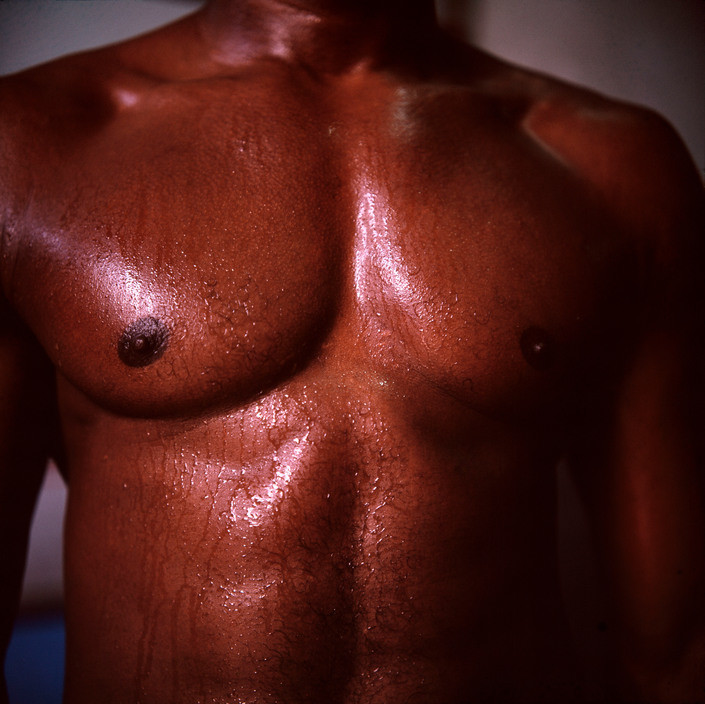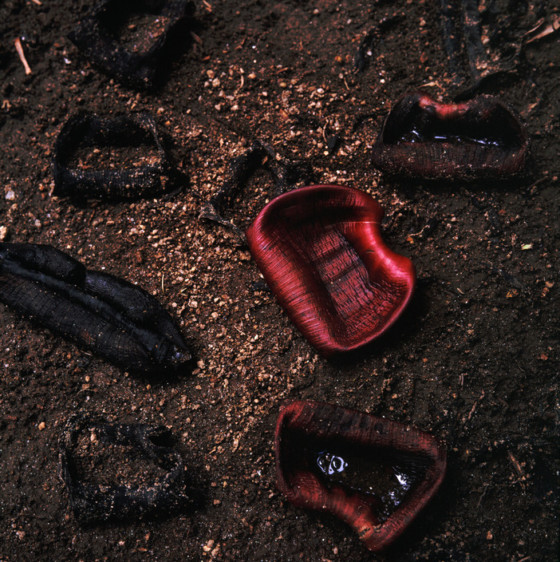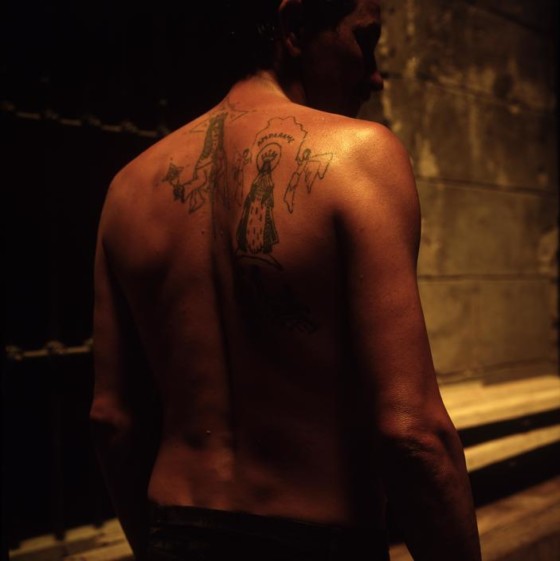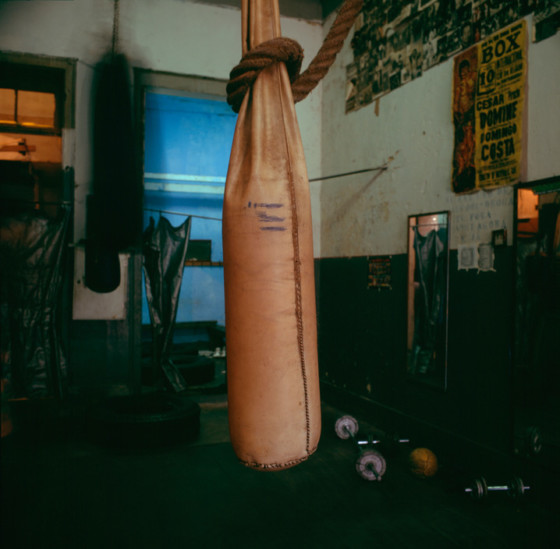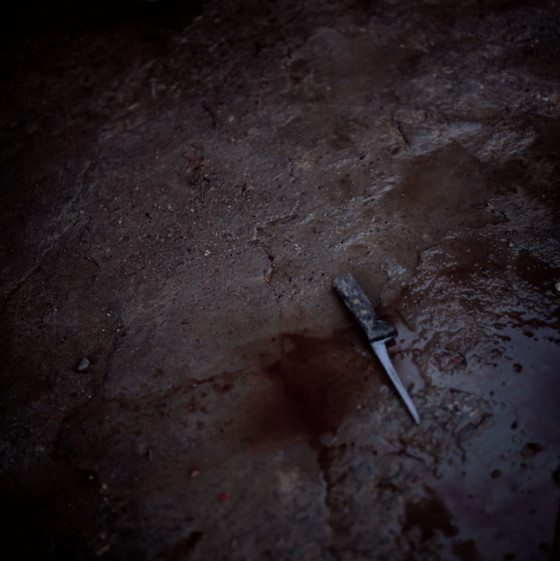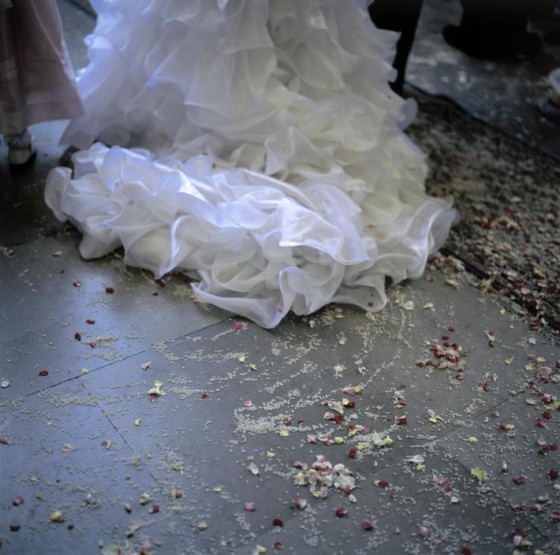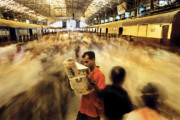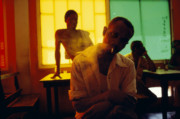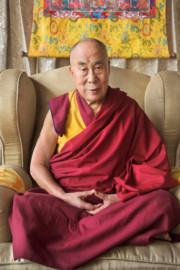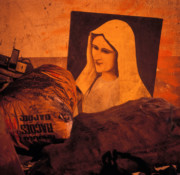Miguel Rio Branco’s Silent Book
With metaphors surrounding violence, death, religion and poverty, 'Silent Book' presents a compelling and mysterious portrait of the Latin world
In the early nineties, Brazilian photographer Miguel Rio Branco began using a square-format camera, a move that would have a significant effect on what he photographed and how. “[It] drove me into a more symbolic use of the images photographed and a more introverted view over the subject,” he says. He began treating the Santa Rosa boxing academy in Rio de Janeiro as his studio, applying his slow and considered approach to deconstructing his subject, the local boxers. However, the “real” subject he was exploring “was the area between body and soul – something fluid in the images,” he explains. Around this time, the photographer also photographed in the Spanish cities of Madrid, Barcelona, Seville, and Santiago de Compostela, all assignments which he says, “drew me into the Christian Latin world of prayer and martyrdom.”
These free assignments came at a time when the photographer was searching for something more. “The tradition of documentary photography was not interesting me at all,” he says, adding that he found inspiration in deconstructing his subjects and using them as vehicles to explore the fundamentals of life: “time, flesh, sexuality, decay, death and pain.” Rio Branco’s work abstracted the literal subjects he photographed to reference what he saw as bigger, more consuming matters. “A whole other world was being presented in the pictures as they were put out of their initial context,” he says.
"Skin is a dialogue between outside and inside, a separation that is also a connection"
- Miguel Rio Branco
Based on this work, the photographer was invited to exhibit at the 1995 Havana Biennale. The work he showed was an atmospheric installation with mirrors that created the effect of motion, in dialogue with collages of photographs from the 70s to 90s, found photos, old pink newspapers and 1920s film stills, over black cloth. The installation was called “Out of Nowhere”, based on the old song sung by Bing Crosby, and featured Rio-Branco’s own soundtrack. “The whole thing was to get away from those questions that most people ask when they see a photograph: were was it taken, when was it taken,” explains the photographer.
This led to an invitation to participate in a Frankfurt exhibition entitled “Prospect” for which he created the work “Door to Darkness”, which would later develop into Silent Book. Work created in Latin counties channeled a history of the crusades, and “a need for a certain spirituality that was somehow forced into the population.”
Silent Book presents a compelling portrait of the Latin world, composing a Baroque panel with ruined objects, poor circuses, brothels and cheap boxing gyms. On Baroque churches, the photographer says that they can appear somewhat scary. “It was more about the morality of the body than spiritual enlightenment,” he says of the strain of Christianity that inspired such buildings.
Mirrored themes of the body and the spirit are conjured through his exploration of brothels and boxing gyms, which themselves evoke some of the ceremony of the religious spaces he explored. “My work has a lot to do with skin, for that is the surface connecting us to the world, in pleasure as much as in pain,” he explains. “Skin is a dialogue between outside and inside, a separation that is also a connection.”
""[Miguel Rio Branco's Silent Book] is a full-blooded Roman Catholic art, its frequent sanguinary references alluding both to the central sacrament of that religion and the violent history of Latin America."
- Badger & Parr
“I don’t think that the boxing and the bull fighting are a release for the frustration of the poor at all,” he says. “I think that those are ceremonial situations that somehow lost a lot of their ritual aspect, destroyed by our current plastic culture.” Through Silent Book, Rio Branco aimed to tap into a common ritualistic element. The book, he argues, is not a straight-forward documentary book, but deals with symbols.
“[Miguel Rio Branco’s Silent Book] is a full-blooded Roman Catholic art, its frequent sanguinary references alluding both to the central sacrament of that religion and the violent history of Latin America,” so say photobook enthusiasts and collectors Gerry Badger and Magnum photographer Martin Parr in The Photobook: A History Volume II.
It continues: “Like that of Manuel Alvarez Bravo, Branco’s art deals with the cultural complexities of the area, even when he makes a photograph elsewhere…describes a world that, while intensely physical, made of blood, sweat and matter, is dark and shadowy, described in sideways glances and mysterious half-lights.”


